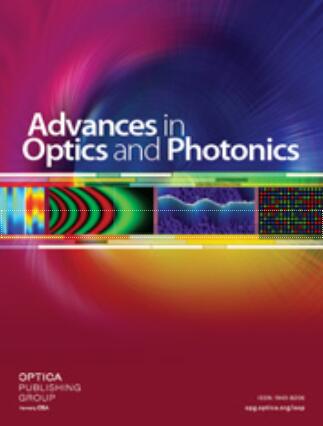周期性纳米孔阵列传感
IF 23.8
1区 物理与天体物理
Q1 OPTICS
引用次数: 35
摘要
在本文中,我们回顾了金属层中周期性压痕的共振条件,并评估了它们在分析物表面传感中的潜力。第一节介绍了纳米孔阵列对传感的重要贡献。然后,使用耦合模式理论对其光学特性进行理论分析,并评估其传感潜力。灵敏度、分辨率和场分布是金属膜不同参数(周期性、孔径和厚度)的函数,以确定传感的最佳设计。本文的重点是一维纳米灯阵列和二维方形纳米孔阵列,以确定使用这些类型结构的传感实验的一般考虑因素。我们包括一个MATLAB用户界面,也可以作为一个独立的应用程序使用,它绘制了纳米孔阵列的透射光谱和反射光谱以及场分布。本文章由计算机程序翻译,如有差异,请以英文原文为准。
Sensing with periodic nanohole arrays
In this paper we review the resonance conditions of periodic indentations in metallic layers and evaluate their potential for surface sensing of analytes. A review of significant contributions of nanohole arrays for sensing is presented in a first section. It is then followed by a theoretical analysis of their optical properties using coupled mode theory and an evaluation of their potential for sensing. The sensitivity, resolution, and field distribution are presented as a function of the different parameters of the metal film (periodicity, hole size, and thickness) to determine the optimal design for sensing. The focus of this paper is made on 1-D nanoslit arrays and 2-D square nanohole arrays to identify general considerations regarding sensing experiments using these types of structure. We include a MATLAB user interface, also available as a standalone application, that plots the transmission and reflection spectrum as well as the field distribution of nanohole arrays.
求助全文
通过发布文献求助,成功后即可免费获取论文全文。
去求助
来源期刊

Advances in Optics and Photonics
OPTICS-
CiteScore
56.60
自引率
0.00%
发文量
13
期刊介绍:
Advances in Optics and Photonics (AOP) is an all-electronic journal that publishes comprehensive review articles and multimedia tutorials. It is suitable for students, researchers, faculty, business professionals, and engineers interested in optics and photonics. The content of the journal covers advancements in these fields, ranging from fundamental science to engineering applications.
The journal aims to capture the most significant developments in optics and photonics. It achieves this through long review articles and comprehensive tutorials written by prominent and respected authors who are at the forefront of their fields.
The journal goes beyond traditional text-based articles by enhancing the content with multimedia elements, such as animation and video. This multimedia approach helps to enhance the understanding and visualization of complex concepts.
AOP offers dedicated article preparation and peer-review support to assist authors throughout the publication process. This support ensures that the articles meet the journal's standards and are well-received by readers.
Additionally, AOP welcomes comments on published review articles, encouraging further discussions and insights from the scientific community.
In summary, Advances in Optics and Photonics is a comprehensive journal that provides authoritative and accessible content on advancements in optics and photonics. With its diverse range of articles, multimedia enhancements, and dedicated support, AOP serves as a valuable resource for professionals and researchers in these fields.
 求助内容:
求助内容: 应助结果提醒方式:
应助结果提醒方式:


